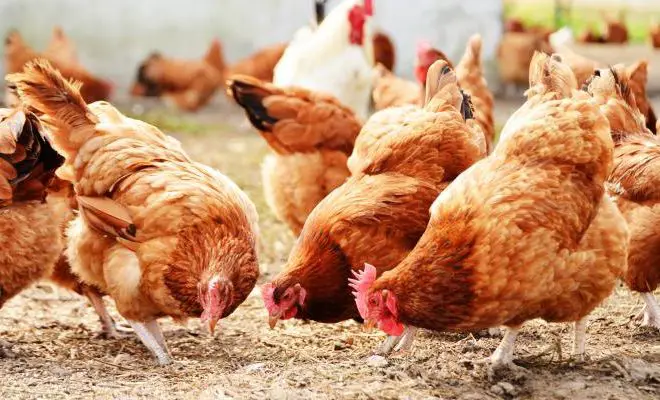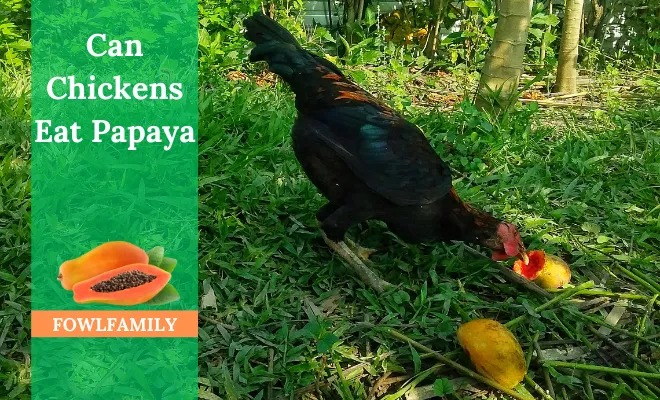
The Blue Isbar Chicken Breed is an interesting bird from Sweden with shiny blue feathers. What makes them special is that they lay eggs with a pretty blue color!
These chickens are great at laying eggs, making them perfect for small farms or backyard flocks. They can handle different weather and are friendly and easy to take care of. If you want a unique and friendly chicken that gives colorful eggs, the Blue Isbar is a wonderful choice! You can find them from local breeders or poultry groups.
In this article, we’ll talk about what makes Blue Isbar chickens special. And learn about how to take care of them and make more of these lovely birds.
Table of Contents
Blue Isbar Chicken Breed Characteristics: A Comprehensive Overview
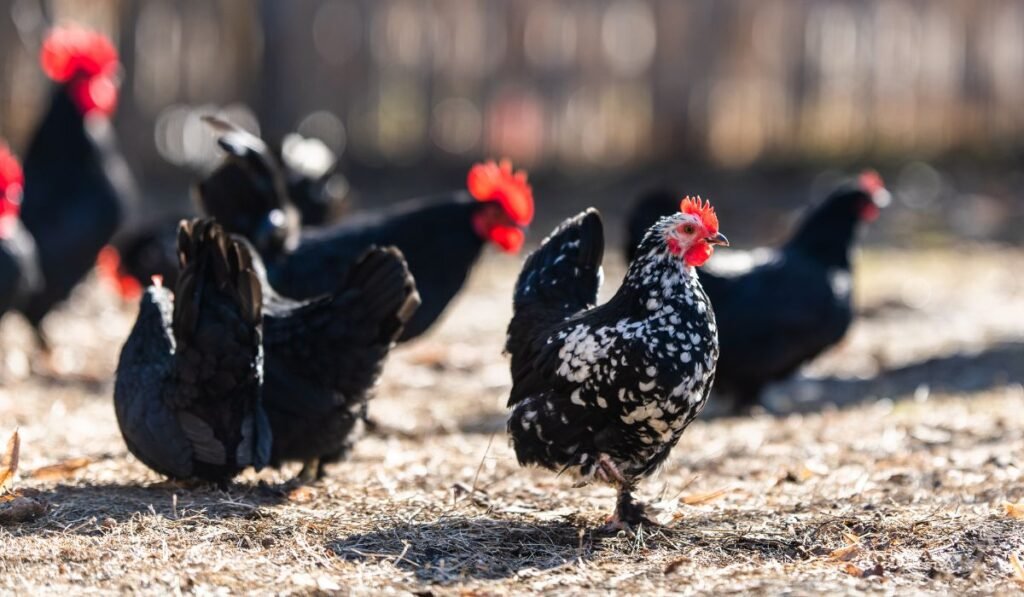
Here is a table that provides a comprehensive overview of the various characteristics of Blue Isbar Chicken.
| Characteristic | Description |
|---|---|
| Breed Name | Blue Isbar |
| Origin | Sweden |
| Purpose | Dual-purpose (meat and egg production) |
| Size | Medium-sized |
| Weight | Hens: 5-6 pounds (2.3-2.7 kg) |
| Roosters: 6-7 pounds (2.7-3.2 kg) | |
| Color Variety | Blue |
| Egg Color | Blue |
| Egg Size | Large |
| Egg Production | High |
| Personality | Docile and friendly |
| Hardiness | Hardy in various climates |
| Broodiness | Moderate |
| Laying Frequency | Approximately 4-5 eggs per week |
| Egg Production Season | Good winter layer |
What Is the History and Location of the Blue Isbar Chicken Breed?
The Blue Isbar chicken, also known as Silverudd’s Blue, has a fascinating history and unique characteristics. Let’s delve into its background:
Origin and Development
The Blue Isbar, also known as Silverudd Blue, comes from a place called Småland in Sweden. It was made by a man named Martin Silverudd, who was a monk and liked chickens a lot. He made this chicken in 1955 because he wanted chickens that were strong, friendly, and laid eggs with interesting colors.
Silverudd created Blue Isbar by blending chickens: Rhode Island Reds, New Hampshire Reds, and Cream Legbars achieving unique characteristics. He wanted to see what cool traits he could get by mixing them.
The Birth of Isbar
Martin Silverudd made a special kind of chicken called the Isbar, also known as Silverudd Blue or Swedish Isbar. He wanted these chickens to lay lots of eggs, and what’s cool is that they lay eggs in different colors, especially green.
The Isbar is unique because it’s the only chicken that always lays eggs with a natural green tint. Because Martin Silverudd worked so hard.
The Blue Variant
Initially, Silverudd created the Isbar breed (without the “Blue” designation).
Later, he introduced an Australorp into the breeding process to create the Blue variant of Isbar chickens.
This variant is commonly referred to as the Blue Isbar or Silverudd Blue Chicken. The Blue Isbar not only boasts stunning blue plumage but also lays eggs in shades of blue and green.
What Defines the Physical Appearance of the Blue Isbar Chicken Breed?
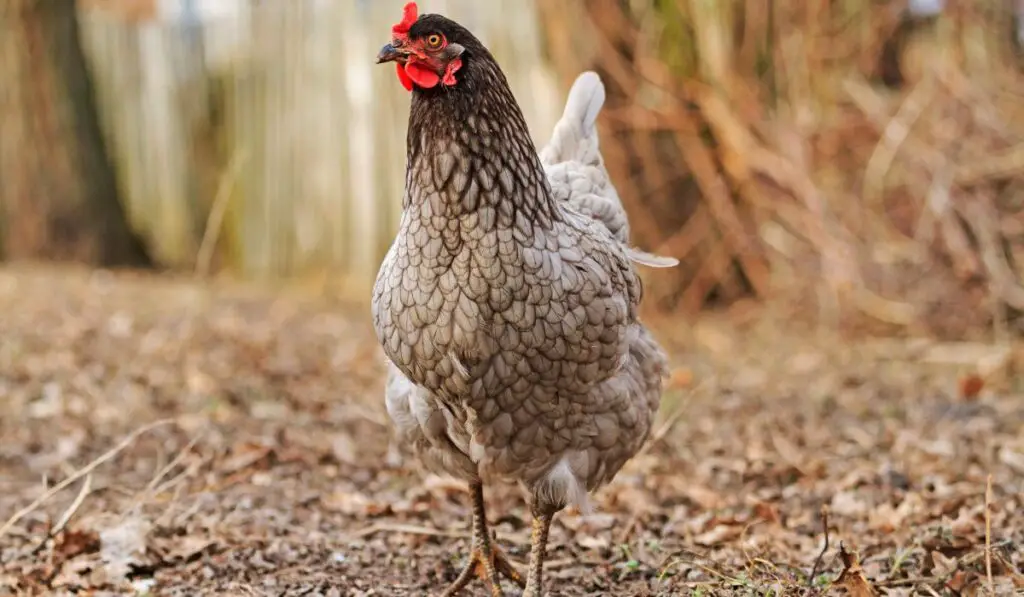
Blue Isbar Chickens may look a bit different, but these traits help tell Male and Female chickens apart.
Male Blue Isbar Chicken
- Comb: Males typically have a larger and more pronounced comb compared to females. The comb is usually bright red and stands upright.
- Tail Feathers: Male Blue Isbars have long, flowing tail feathers. These feathers are often more prominent and showy.
- Behavior: Roosters tend to be more vocal, crowing at dawn and throughout the day. They may also exhibit protective behavior towards the hens.
- Size: Generally, adult male Blue Isbars weigh approximately 6 to 7 pounds.
Female Blue Isbar Chicken
- Comb: The comb of female Blue Isbars is usually smaller and less prominent. It may be a lighter shade of red.
- Tail Feathers: Hens have shorter and less showy tail feathers compared to roosters.
- Egg-Laying: Females are excellent layers of blue and green-tinted eggs. Their egg production is a valuable trait.
- Behavior: Hens are generally quieter and more focused on egg-laying and foraging.
- Size: Generally, adult female Blue Isbars weigh approximately 4.5 to 5.5 pounds.
Reproduction and Breeding of Blue Isbar Chicken Breed
Blue Isbar chickens are not only visually striking but also an excellent layer. Their reproductive cycle, from egg-laying to hatching, is a remarkable process to observe.
Whether you’re a seasoned poultry enthusiast or a beginner, these charming chickens are a joy to raise and breed.
When do Blue Isbar Chickens start breeding?
Blue Isbar chickens, like other poultry breeds, reach sexual maturity at different ages.
Blue Isbar Chickens typically start laying eggs during the spring season. These birds begin laying eggs around 5 to 6 months of age.
However, individual variations exist, and some may commence egg production earlier or later. Providing a suitable environment and proper nutrition is crucial to encourage early egg-laying.
When do the baby chickens hatch?
Once a Blue Isbar hen lays fertilized eggs, the magical incubation period begins. For chicken eggs, this period lasts approximately 21 days.
During this time, the diligent hen diligently sits on her eggs, maintaining the right temperature and humidity for successful hatching.
After three weeks of anticipation, adorable little chicks emerge from their protective shells.
How many eggs do they lay?
Blue Isbar hens are prolific layers, which contributes to their popularity among backyard chicken enthusiasts. On average, a healthy Blue Isbar hen can lay around 200 to 250 eggs per year.
Factors such as diet, lighting conditions, and overall health significantly influence egg production. Ensuring a balanced diet rich in protein and calcium ensures optimal egg-laying performance.
What color are the eggs?
Blue Isbar chickens lay beautiful mint-green or sage-colored eggs.
The shade can vary slightly, but it’s always a surprise when you collect these distinctive eggs from the nesting boxes. The blue-green hue adds a touch of elegance to your eggbasket.
If you’d like to delve deeper into Blue Isbar chicken, check out this informative video on Blue Isbar Chicken breeding:
How to Successfully Breed Blue Isbar Chickens?
Breeding Blue Isbars is like creating a chicken family! To get more blue eggs, choose male and female chickens with a special blue egg gene. Make sure both parents have two copies of this gene.
Additionally, follow these steps to successfully breed Ameraucana chickens:
- Pick healthy pairs with good feathers, avoiding close family members.
- Handle eggs carefully, write dates, and remember parents’ names.
- Use a machine or let a hen sit on eggs, keeping them warm and humid.
- Keep baby chicks warm, give them good food and water, and protect them.
- Watch for problems as chicks grow and fix them quickly.
- Write down which parents had babies, how many, and how many eggs they laid.
What Are the Pros and Cons of Choosing Blue Isbar Chickens?
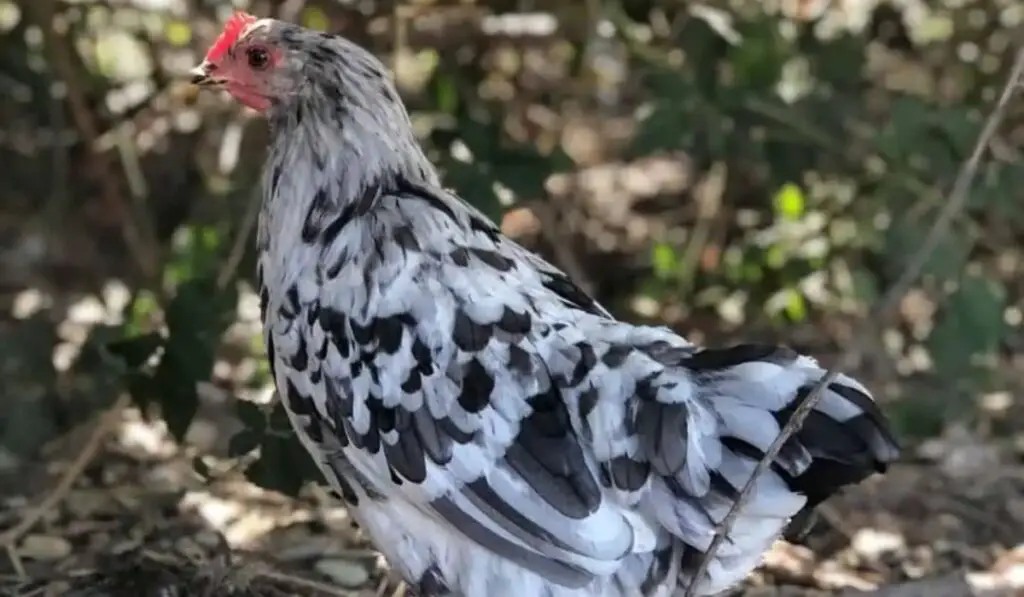
Blue Isbar chickens are captivating birds that have won the hearts of chicken enthusiasts worldwide. Let’s explore the pros and cons of choosing these unique feathered friends:
Pros of Blue Isbar Chickens
- Lay unique green-tinted eggs.
- Shimmering blue or gray feathers.
- Enjoy the human company.
- Budget-friendly in terms of feed.
- Continue laying eggs even in cold weather.
Cons of Blue Isbar Chickens
- Not suitable for meat production as they are small in size.
- Prone to illness, requiring good care.
- Need space for exploration.
Related Articles:
Final Words
The Blue Isbar Chicken is a special and friendly chicken with pretty blue feathers. It’s a great choice for people who love chickens. Just give them good care and a nice home, and they’ll make lots of eggs for you.
If you want a colorful and happy flock, think about getting Blue Isbar Chickens. They’re a fantastic addition to any chicken family!




